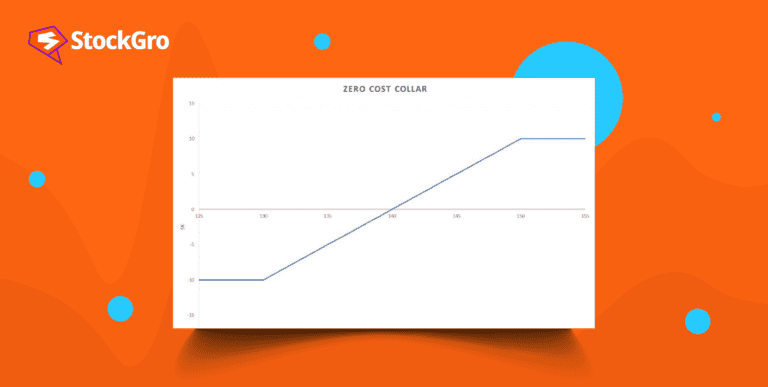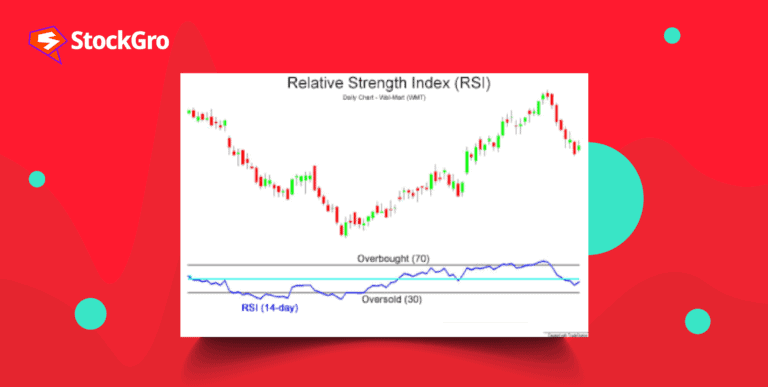
For many investors, particularly those who are new to this, understanding the depths of the market may be challenging. Since more individuals have started becoming involved in trading, events related to financial markets are creating a stir. Quadruple witching is one such well-known market phenomenon with a catchy name.
So, what is quadruple witching, how does it function, and how does it compare to triple witching – we will dive deep into this “witchcraft” in this article. Let’s begin.
You may also like: NSE considers extending trading hours
What is quadruple witching?
Quadruple witching in the stock market contract expiration for four derivatives instruments, including index options, index futures, stock futures, and stock options. Its knowledge is vital because the expiration of derivatives contracts means the settlement and exercise of the contract.
Increased trading activity typically occurs around expiration as investors and traders attempt to close their current positions or roll over into the next month. The name quadruple witching comes from Western folklore regarding the “witching hour” – the hour at which evil is most potent.
Similarly, volatility might get at its highest during four simultaneous expiration of derivatives contracts. Other common names for quadruple witching are quad witching, quadruple witching hour, or quadruple witching day.
Talking about the quadruple witching history, the third Friday of each month—March, June, September, and December—is designated as the freaky Fridays in stock trading. According to this context, March 17, June 16, and September 15 were the dates for quadruple witching in 2023; the upcoming one is December 15.
How does quadruple witching work?
The expiration date is different for every exchange worldwide. Certain exchanges have set up their contract expiry to conclude on a certain day of the week or month, whereas others would rather settle and have the contract expire on the last day of the calendar month.
For instance, the National Stock Exchange in India uses Thursdays for weekly expiries and the last Thursday of the month for monthly expiries. In contrast, US exchanges designate Friday, the third Friday of months: March, June, September, and December, contracts totalling hundreds of billions of dollars expire at once.
This occurrence is no longer a mystery. Market makers that have closed out matched hedging positions by selling expiring stock and index options contracts increase trading volume. Meanwhile, contract rolling before expiration enhances turnover in the F&O markets.
Triple witching, a concept closely connected to quadruple witching, is another critical point to consider here. Triple witching has become common since single stock futures are no longer traded in the United States.
Also read: Understanding after-hours trading and strategies for success
Why is quadruple witching important?
In quadruple witching, trade volumes tend to rise significantly for various reasons. Traders place multiple orders on the market when contracts end, and new ones are formed.
Upon closing their positions in the existing contracts, some choose to roll over or enter a comparable contract, while others prefer to enter settlements. In addition, investors hedge their bets and attempt to profit from volatility and changes in the market.
If you trade futures or options, quadruple witching is essential since deciding how to handle your open positions and contracts is critical. You risk making the incorrect choice, or at the least, the worst one, if you put off making that crucial decision until the final day.
So, to be prepared for the triple witching day, you must constantly plan and have a solid risk management strategy. Although you may modify your plan as needed, knowing where you want to go is crucial.
It is also imperative that other market participants engage in quadruple witching. It may cause volatility to rise and skew market data for specific instruments. When the quadruple witching day arrives, for instance, a trader may find it difficult to discern whether price fluctuations in a given stock are due to the expiration of numerous derivative contracts on the same day or to the stock’s basic concepts, recent statements, and related news.
A spike in trading volume during a specific period is the most notable impact of quadruple witching on the market. Certain lucrative contracts that are currently in place for futures and options may be offset at the going rate of exchange. In this manner, they can make up any difference between the buy and selling prices, gain or loss.
Trading activity often increases as a result of all these market movements. For example, here you can see an example of quad witching in NSE that took place in 2020-2021.
In summary, traders and their market behaviour forecasts greatly benefit from quadruple witching. The well-known truth is that the market often calms down and decreases following the quadruple witching week due to the depleted near-term stock demand.
Also read: How to trade in options and maximise your profit?
Triple witching vs. quadruple witching: Similarities and differences
When stock index futures, and stock options, and stock index options, all expire on the exact same day, it’s known as triple witching. Due to the addition of single stock options in 2002 and their quarterly expiration dates, triple witching is occasionally referred to as quadruple witching.
Below is a brief summary of the distinctions and parallels between triple witching and quadruple witching.
| Quadruple witching | Triple witching |
| Involves the expiration of four types of derivatives contracts: stock index futures, stock index options, stock options, and single stock futures | Involves the expiration of three types of derivatives contracts: stock index futures, stock index options, and stock options |
| Occurs on the third Friday of March, June, September, and December | Takes place on the same days as quadruple witching |
| Single stock futures are traded in India on the National Stock Exchange (NSE) and the Bombay Stock Exchange (BSE) since 2002 | Single stock futures are not relevant for triple witching |
| May result in increased trading volume and liquidity, but not necessarily increased volatility | May have the same effects as quadruple witching |
Quadruple Witching Dates 2024
Financial markets experience quadruple witching on the third Friday of March, June, September, and December. On these days, four financial contracts expire at the same time: stock index futures, stock index options, stock options, and single stock futures. This simultaneous expiration can lead to increased market volatility and trading activity.
Here are the dates of quadruple witching for the years 2024, 2025, and 2026 in India.
| Dates for 2024 | Dates for 2025 | Dates for 2026 |
| March 15 | March 21 | March 20 |
| June 21 | June 20 | June 19 |
| Sept. 20 | Sept. 19 | Sept. 18 |
| Dec. 20 | Dec. 19 | Dec. 18 |
During the final hour of trading on these days, often called the quadruple witching hour, market activity tends to rise as traders modify positions and renew contracts.
Quadruple Witching Contract Types
As you develop a better understanding of what quadruple witching is, it is time to look at the four types of contracts that can expire on these days.
1. Stock Options
Stock options are financial contracts that give investors the right, but not the obligation, to buy or sell a specific stock at a set price before a certain date.
There are two types:
- Call options (right to buy)
- Put options (right to sell).
Stock options are often used by traders to hedge against losses or speculate on a stock’s future price movement.
Since the expiration affects market liquidity, stock options are crucial during quadruple witching.
2. Index Options
Stock Index Options are financial contracts that give traders the right, but not the obligation, to buy or sell a stock market index (like Nifty or Sensex) at a specified price before a set date.
These options help traders hedge against market risks or speculate on future index movements.
Unlike stock options, which focus on individual company stocks, index options are based on the entire stock market performance.
3. Index Futures
Stock Index Futures are contracts where traders agree to buy or sell the value of a market index, like Nifty or Sensex, at a future date.
Instead of trading actual shares, these contracts focus on the index’s price movement. Traders use them to speculate or hedge against market risks.
The contract is settled on the expiration date based on the index’s performance, and no physical exchange of stocks happens.
4. Single Stock Futures
Single Stock Futures are contracts that allow traders to buy or sell a specific stock at a predetermined price on a future date.
Unlike regular stock buying, where you pay the full amount upfront, with futures, you only need to pay a margin (a percentage of the stock’s price). These contracts are useful for hedging or speculating on the stock’s price movement.
At expiry, the buyer or seller must settle the contract by delivering or receiving the stock at the agreed price.
How to trade in Quadruple Witching
Quadruple Witching refers to the simultaneous expiration of four types of financial contracts—stock index futures, stock index options, stock options, and single stock futures—on the same day. It happens on the third Friday of March, June, September, and December. In India, traders can manage this volatility by:
1. Avoiding high-risk trades
Avoiding high-risk trades during Quadruple Witching is important because the market can be very unpredictable. This is a day when several types of contracts expire, leading to high trading volumes and sudden price changes.
For example, prices of stocks and derivatives may swing sharply due to the simultaneous expiration of futures and options.
To avoid unnecessary risk, it’s wise to avoid speculative trades and focus on safer strategies like index funds or large-cap stocks that are less volatile.
2. Tracking market trends
Tracking market trends means closely watching how stock prices move and identifying patterns that could hint at future changes. Traders should focus on important indicators like market sentiment, trading volume, and price action.
Understanding these movements helps traders anticipate volatility during Quadruple Witching, giving them a better chance to make timely decisions that minimize risks or seize profit opportunities from sharp price changes.
3. Limit Orders Over Market Orders
Using limit orders instead of market orders during Quadruple Witching can help you control the price at which your trade is executed.
A limit order sets a specific price for buying or selling, which is useful when markets are volatile. Market orders, on the other hand, execute immediately at the current price, which may fluctuate quickly.
Limit orders protect you from unexpected price swings, ensuring more control over your trades.
4. Stick to Your Strategy
Sticking to your trading strategy during Quadruple Witching is crucial because the market can become unpredictable and volatile.
Emotional decisions, like panic buying or selling, can lead to losses. By following your pre-planned strategy, you stay focused on your goals and avoid making hasty choices.
This helps you manage risks better and increases the chances of consistent results despite market fluctuations.
Conclusion
If anything, quadruple witching is an event that reminds traders/investors not to be greedy. Delaying that decision until the actual day is likely to go wrong. Thus, it’s essential to always plan ahead and have a suitable risk management strategy in place to know what to do when the witching day arrives.

